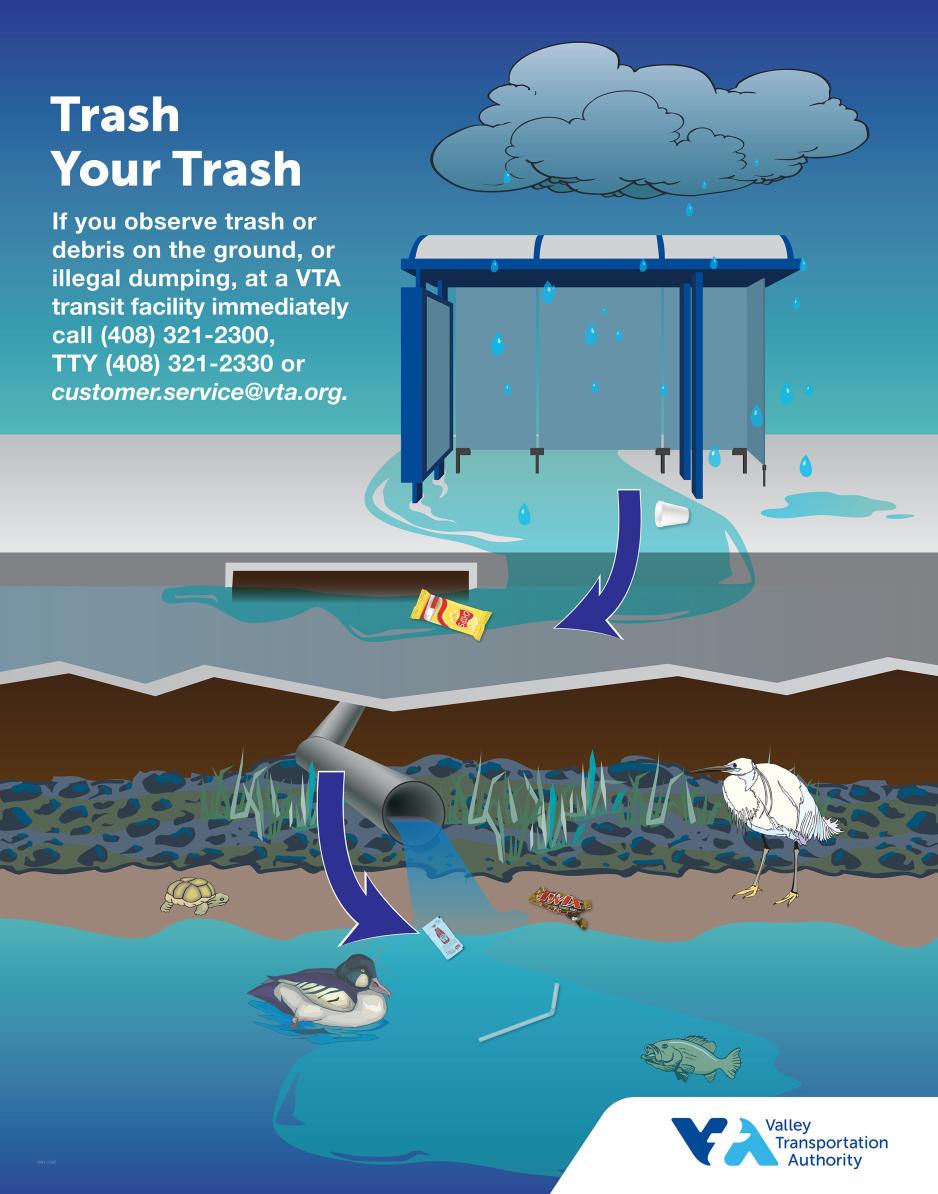Body
WHAT YOU CAN DO
Here are some ways to keep storm drains clear of trash and pollutants:
- Keep garbage and recycling cans tightly covered to prevent litter from being blown away during storms.
- Take your car to a commercial car wash prior to the first rains.
- Do not drain or pour any automotive fluid onto the street or into a storm drain.
- Sweep dirt out of curbs and into landscaping to prevent it from entering storm drains.
- Adjust your sprinklers to prevent over-watering and prevent water from draining onto paved surfaces such as driveways and sidewalks.
- Consider installing efficient irrigation systems and water-wise plants.
- Do not apply pesticides or fertilizers before a rain event or within
- 5 feet of pavement
- 25 feet of a storm drain
- 50 feet of a water body
- Compost organic material such as food waste, leaves and yard clippings.
- Always pick up after your pet.
To report trash, illegal discharges or dumping on the ground or near a storm drain at a VTA facility, please tell us immediately.
- PHONE: (408) 321-2300
- (408) 321-2330, hearing impaired only
- EMAIL: customer.service@vta.org.
VTA Drain Medallions
VTA has installed "No Dumping - Flows to Bay" medallions at VTA drain inlets to remind riders that only rain can go down the drains.
With the rainy season comes stormwater runoff- the rain that flows over land and other surfaces and does not soak into the ground.
This runoff then enters storm drain systems and goes directly into local streams and ultimately the Bay.
Often, this runoff carries litter and pollutants with it through its path from streets and gutters out to the Bay.
